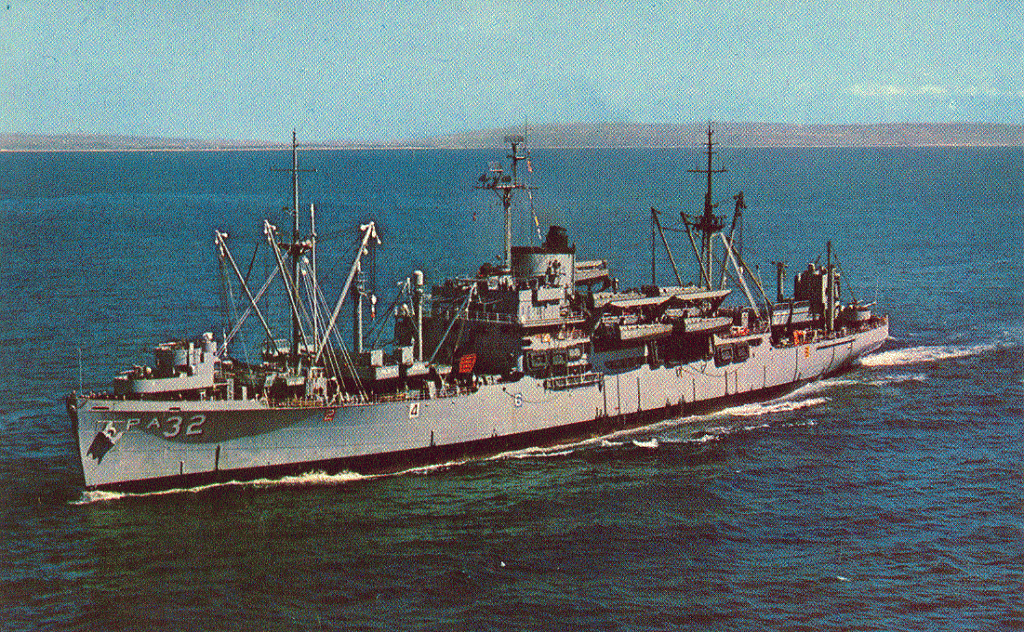
An Attack Transport, the USS Calvert (APA-32) transported US troops and equipment from Allied bases to Axis beaches during WWII. The Calvert also saw service as a transport during the 1950s and the 1960s, including service during the Korean and Vietnam wars.
At an invasion staging point, typically located several miles offshore from the target landing beaches, the Calvert’s landing boat crews left the ship and transported men and equipment onto enemy beaches via small-to-mid sized landing craft, and often while under fire. After unloading all men and cargo the Calvert was at times used as a triage point for wounded US soldiers and for transporting German and Japanese prisoners of war back to the United States.
The links below open pages that provide many additional details on the ship herself and the changes she underwent during her 20+ years of service to the US Navy.
- Origin story and design details – Downloadable detailed research notes.
- Photographs of the Calvert during her service from 1942 – 1966.
- The Calvert’s technical and mechanical details, including schematic drawings.
- The Calvert’s landing craft: LCPs, LCVPs, LCMs, and more.
A well designed ship
The Calvert was a well-respected ship by her crew and commanders across her entire time in service to the United States Navy. Her design, as one of six C3-C&P “Delta type” ships built, is attributed to the naval architect V.M. Friede.
“She rode like a duck … I’ve ridden a good many ships in my day, some heavy rollers, thirty degrees on a side, and some with a snap and roll of 5 second period that would wear you plumb out. But Calvert was in a class by herself. Never experienced a better sea boat. She rode like a duck, never pounded or shuttered. Whoever put her together knew their ship design. And with the exception of a bridge door that banged like a saluting gun just the other side of my bedroom bulkhead, I had no complaints, only praise. I left her with regret in June 1956, after an unusually long cruise in command of Phibron V, relieved by Commodore F.V.H. Hilles.” – Kemp Tolley, Calversion Vol 9, p7
The following poem was penned by Billie Trout, a WWII-era crew member.
Yes, I sailed on the PA-32.
I was one of many in her crew.
Who lived below her decks of steel.
And, while living there, began to feel.
That she had a soul and was really real.
We could feel her pulse as she sailed along.
And the screw, back aft, it sang a song.
And never once did her power fail.
Not even in the roughest gale.
She would roll, and heel, and sudder.
And still she would answer to the wheel and rudder.
And it seems she could weather almost any storm.
And still be a place that was dry and warm.
Now, where did they go, these young, tanned men?
That took her out and brought her back again?
Well, I thought I saw one just today.
Looking back in the mirror, he seemed to say.
“Boy, you’ve gotten old, and you’re fat and gray.”
Now I wonder if they all turned out that way.
And now they tell me the Calvert’s gone.
That they’ve scrapped her out west on the coast.
But in my mind, she still lives on.
She is real and not a ghost.
So go to your stations all the sea detail.
For we must have one more thing to do.
We must tell the world of the mighty deeds.
Of the Calvert and her crew.
Let the word go forth from father to son.
And from son to his son too.
Then there can be no death,
For the Calvert and her crew.